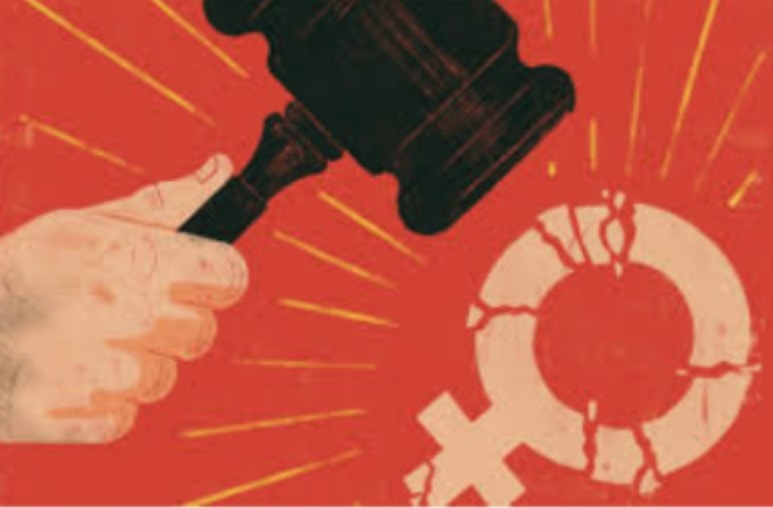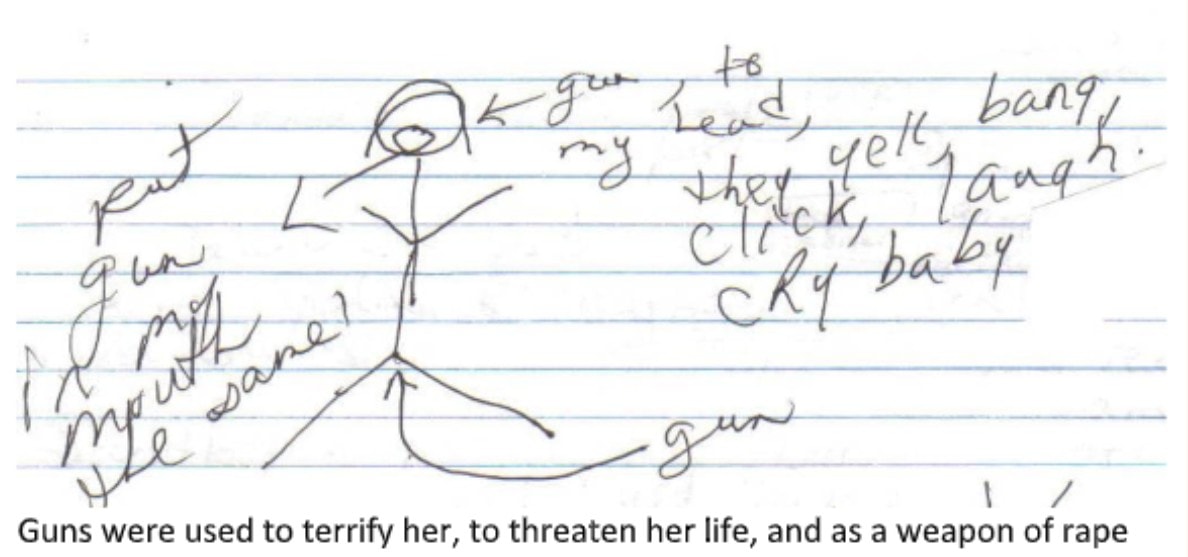
KJIPUKTUK (Halifax) – When I, Jeanne, was teaching 12-year-olds about human rights and equality of girls and boys, a male student spoke up. In a flash the hammer of misogyny—of the hatred, objectification, and dismissal of girls and women as equal persons became glaringly visible. The student explained that, “My father said all you have to do is put a bag over her head and they are all the same.” Illustrating how misogyny was being passed on to the next generation of males. Keeping this misogynistic attitude will be expressed in his behaviours as he grows into manhood—but—he will have a choice. Hear this—being a misogynistic adult male is a choice!
Likewise, the misogynistic violent serial spousal assaulter began his mass killing in Portapique, Nova Scotia. He killed twelve 12 women, one female youth, nine men, and two dogs—he had a choice.
Likewise, it was up to the RCMP and others to listen and to act on prior warnings that this man was violent and possessed guns—they too had a choice.
Likewise, Brenda Forbes, living a five-minute-walk from the killer’s home, she too had a choice. When speaking with us, Brenda explained how in 2013 she had called the RCMP and spoke to community members attempting to expose that the killer was a dangerous violent man who assaulted his female partner. Her fears grew intense when the killer began stalking her at her home. Brenda and her partner moved away from the Portapique neighbourhood. She said, “He scared the crap out of me.” Now it’s 2020 and Brenda is repeating and re-explaining her choices made in 2013, restating her fears in a Global National TV video interview.
Serial domestic assaulters and torturers: Let’s not forget the herstorical
Have we as Nova Scotians considered that violent domestic assaulters and domestic torturers are serial perpetrators? The killer’s uncle said he witnessed the killer repeatedly assault his female partner. This means this man was a violent serial assaulter.
In 2014 researchers in Wales and England found that between 4 and 20 percent of spousal assaulters are serial perpetrators. Prior to this, back in 2006, researchers wrote in their book, Snakes in Suits, that one in five or 20 percent of persistent or serial spousal assaulters may commit “sadistic crimes” on those they choose to victimize. This acknowledges the reality there are perpetrators who commit acts of serial domestic torture which has been the focus of our work for the past 27 years. This work began in Nova Scotia.
Following Brenda Forbes’ public disclosure of the killer’s repetitive victimization of his female partner, a woman recently spoke to us of the serial spousal assaults she suffered, including being strangled once. She made reference to Jane Hurshman’s Life with Billy. A few snapshots into Jane’s life reveals she suffered years of serial torture victimizations committed by Billy her husband. Besides ongoing beatings and inflicting sleep deprivation, Billy repetitively forced a piece of solid plastic plumbing pipe into Jane’s anus, he tied her to a chair naked then ‘plucked’ out her pubic hair, he urinated in a glass then grabbed Jane by her hair forcing her to swallow his urine, he dragged her by her breast, and shoved soiled panties into her mouth to silence her screams of pain. Jane described watching Billy kick and bite their dog. Like the violent NS mass murderer who spoke about killing people in the U.S., Billy said he killed a fisherman by throwing him off a fishing boat. Jane described that “Bill took everything from me, a bit at a time, until there was nothing left but a shell.”
Jane stood trial for the first-degree murder of Billy; in 1982 on appeal the jury’s verdict was– “Not guilty.” During the trial RCMP Staff Sergeant Williamson testified he chose to exclude Jane’s description of the brutalities she described suffering from his investigative statement “because he felt they had nothing to do with the event.” Illustrating in the 80s the impact misogyny had on dismissing violent serial spousal victimization. It is important to take a herstorical perspective because as everyday persons we insist that misogynistic-based attitudes and actions continue and must now be transparently and honestly addressed in a public Nova Scotia inquiry. Otherwise children, women, and men of all ages, and animals, in any Nova Scotian community are at serious, even life-threatening risks.
Guns and serial assaulters and torturers
As Nova Scotians we need to rethink the realities of domestic assaulters, torturers, and mass shooters because they have a history of being serially violent to their female partner. Billy had a gun which he used to shoot at Jane threatening to kill her. If perpetrators have a gun this increases the risks for femicide. But guns are also used as a tool to terrorize and to rape with.
Often women may first cope to tell us their stories with a drawing because the emotional terror they felt at the time returns silencing or freezing them from telling. Drawing can initially help them tell what they wanted to speak aloud. Such as this drawing by Sara, when a young woman she wanted us to “see” how she was terrorized, raped with a gun, and humiliated when laughed at and demeaned when put down as “cry baby.”

Women who have survived serial torture within family relationships tell us guns were the main weapon the perpetrators used to terrify them. Just a few weeks ago I, Jeanne, reviewed 77 responses sent to us by women listing the forms of domestic torture they survived. Selecting just four items from the 48 listed, 79 percent of the women said they were raped with a gun, knife, and other objects; 61 percent indicated they were forced to watch pets being harmed or killed; 90 percent said they were threatened to be killed, and 99 percent said they were treated as non-human.
Such misogynistic hatred, threats, and guns keep women terrified never knowing when they will be killed. Such serial violence is serious because mass killers frequently have a history of misogyny and spousal assaults. U.S. studies inform that the majority (61%) of mass shootings occurred entirely in the home.
An independent provincial public inquiry: Examining misogynistic violence with a feminist analysis
With colleagues—NS Feminists Fighting Femicide (FFF)—we called for an inquiry in our media release. Seeking the inclusion of a feminist analysis as one part of a public provincial inquiry requires (a) identifying the impact misogyny had on the RCMP failing to investigate Brenda Forbes’ complaints to them that the killer had guns and assaulted and strangled his female partner, (b) examine how misogyny leads to the dismissal of warnings signs suggestive of femicidal risks and the potential for mass killings, and (c) hear how Nova Scotians want men’s violence against women to be addressed including understanding the impact of misogyny and serial perpetrations.
A feminist analysis is essential to prevent an inquiry that contains a patriarchal bias. Admitting that both men and women are born into a patriarchal society means we are all impacted by this bias. Actually worldwide research tells us that 91 percent of men and 86 percent of women show at least one clear bias against equality including when considering intimate partner violence. In only six of the 75 countries studied did the majority of people hold no inequality bias towards women. Patriarchy grants men a position of privilege, of domination, and power and control over women who were/are socially considered and treated as inferior. This bias of being socially oppressed conditions women to accept their inequality ignoring their right not to be subjected to male violence. Therefore, a feminist analysis must be included to eliminate this patriarchal bias.
Acknowledging the existence of a patriarchal discriminatory bias one just needs to briefly examine women’s herstorical struggles against misogynistic oppression. For instance, Canadian women had to fight for the right to vote—Nova Scotian Suffragettes gained this right in 1918; it meant Indigenous women did not gain the right to vote until 1960; it meant the famous five women had to travel to the Privy Council in London, England to win that women be declared “persons” in 1929 thus able to become senators; and an everyday example of women overcoming oppression was in 1964 when they gained the right to open a bank account without obtaining their husband’s signature. The list of overcoming subordination and oppression continues in this push for a Nova Scotian inquiry. We must engage in a truth-seeking transparent and no doubt painful deliberation to achieve recommendations that will work towards eliminating misogynistic bias. A bias that ignores or minimizes violence against women—ignores serial assaults and torture. We must work to catch and report warning signs in our efforts as Nova Scotians to disrupt and prevent the risks of further femicides and mass shootings.
A feminist analysis supports a Nova Scotian public inquiry that cares. The opportunity needs to be provided for children, adults, and families who have been victimized and traumatized by the mass killer’s rampage with the right to speak.
Feminicide occurs when a government fails to take action to prevent or intervene to hold men accountable for acts of violence perpetrated against women and girls. Misogynistic violence takes many forms, including emotional and psychological abuse, verbal abuse, assaults, stalking, strangulation, torture, rape, other forms of sexualized violence and exploitations, and forms of femicide plus evolving forms such as suicidal femicidal conditioning for example. Deputy Prime Minister Chrystia Freeland states, “Feminicide has long been a scourge in our society. It remains a scourge, we must stop it.”A Nova Scotian public inquiry needs to make its recommendations to the national government for updating amendments to the Criminal Code of Canada.
Upholding a culture where misogyny thrives within individuals, within relationships, within our institutions such as the RCMP is no longer a choice. And the warning signs are detectable and not senseless. Femicides and mass shooting can be prevented. The choices made by violent men who inflict misogynistic-based terrorization, femicides, and homicides must no longer be silenced, must no longer be ignored, dismissed, or trivialized. Nor can we remain accepting of the 12-year-old’s “put a bag over her head” intergenerational misogynistic harms inflicted onto children. It is time to insist on our caring wisdom—our choice to become a province focused on eliminating decades—no centuries—of relational misogyny and misogyny within our institutions.
See also: Call for a public inquiry into the mass shooting and other acts of violence in Nova Scotia on April 18-19, 2020
Are you facing intimate partner violence? Here are some Nova Scotia resources that can help, as compiled by the CBC

Jeanne Sarson, MEd, BScN and
Linda MacDonald, MEd, BN
Co-founders Persons Against Non-State Torture (NST)
Human Rights Defenders
361 Prince Street, Truro, NS, Canada B2N 1E4
P: 1.902.895.6659 | C: 1.902.956.2117 | twin2@eastlink.ca
www.nonstatetorture.org
contact@nonstatetorture.org
With a special thanks to our generous donors who make publication of the Nova Scotia Advocate possible.
Subscribe to the Nova Scotia Advocate weekly digest and never miss an article again. It’s free!



